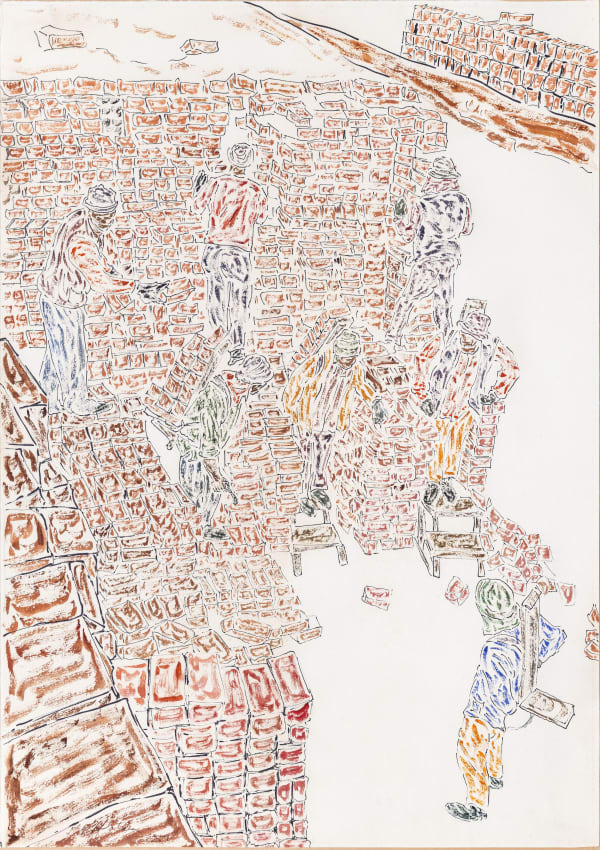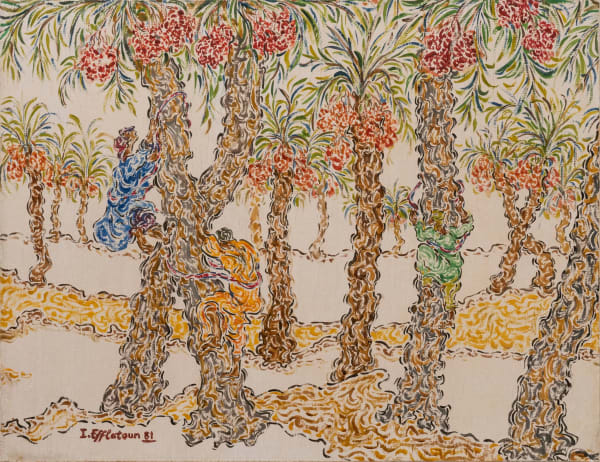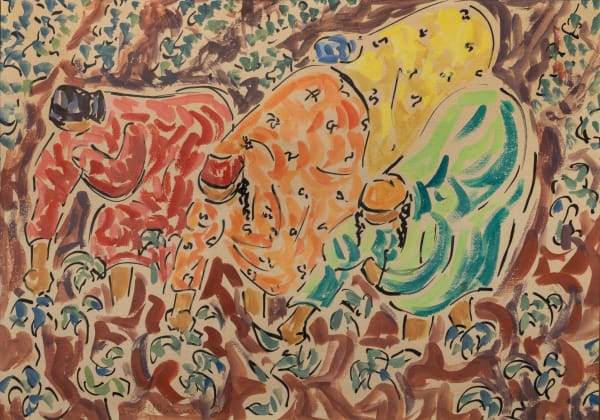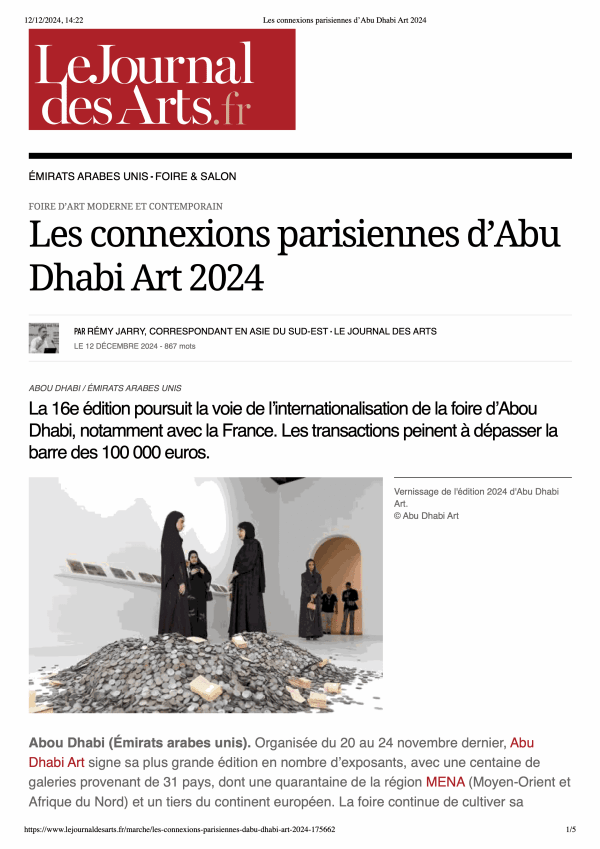Inji Efflatoun Cairo, 1924-1989
Born to a wealthy family from Cairo's French-speaking aristocracy, Inji Efflatoun started painting very early on and was introduced by Egyptian surrealist painter Kamel el-Telmissany to the "Art et Liberté" ("Art and Freedom") movement, and engaged from 1940 in intense militant activity. One of the first women to study in the arts department of the University of Cairo, she campaigned for gender equality in Egypt and Europe and published several manifestos. Inji Efflatoun became renowned in the 1950s in Egyptian and international artistic circles. Her work was presented at the new Egyptian Pavilion at the 1952 Venice Biennale and at the 2nd São Paulo Biennale in 1953. In the late 50s, probably influenced by her meeting with the Mexican muralist David Alfaro Siqueiros, her style moved further towards socialist realism. In 1959, she was arrested for her clandestine political activism by Nasser's forces and imprisoned for over four years. From her liberation in 1963 to her death in 1989, Inji Efflatoun devoted herself to painting with sporadical political engagement. Her work was shown in Egypt and Europe, and she became a respected figure in the art world. She continued to manifest her interest in the working class through her art. However, her style has become more contemplative, with greater importance given to reserve, which she calls "white light". Inji Efflatoun's pictorial work and militant legacy, documented in her writings and memoirs, are part of the modern history of Egypt and have widely circulated in the Arab world. Part of her work is shown at the Museum of Modern Art in Cairo. It has been the subject of a growing interest in Europe in the past few years as well as studied and written about in universities in Europe and the United States.










